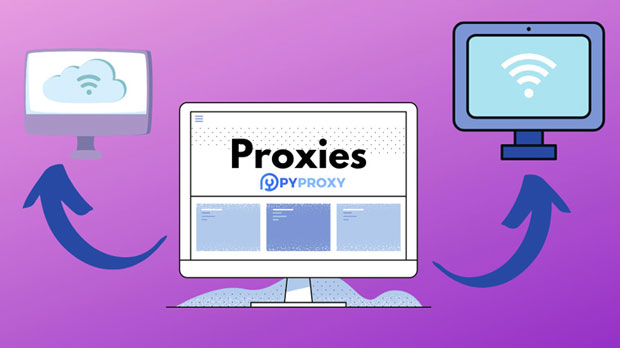In modern web architecture, reverse proxy plays a crucial role in enhancing performance, security, and scalability. A reverse proxy acts as an intermediary between clients and web servers, forwarding client requests to the appropriate server and delivering responses back to the client. It helps to distribute the load evenly across multiple servers, protects sensitive backend systems, and can also optimize content delivery. This article explores the key roles of reverse proxies in web architecture and provides insights into their significance for modern web applications. What is a Reverse Proxy?A reverse proxy is a server that sits between the client and one or more backend servers, forwarding requests from clients to the appropriate server and returning the server's response to the client. Unlike a traditional forward proxy, which serves as an intermediary for clients seeking to access external resources, a reverse proxy handles requests on behalf of the backend server, essentially masking its identity from the client. This setup is particularly important in large-scale, high-traffic web applications where performance, security, and scalability are critical. Reverse proxies are often used in conjunction with load balancers, firewalls, and caching systems to ensure smooth and efficient operation of web applications.Load BalancingOne of the primary functions of a reverse proxy is load balancing. Load balancing is the distribution of incoming traffic across multiple backend servers to ensure no single server becomes overwhelmed. By spreading the requests evenly, reverse proxies help prevent server crashes and reduce the risk of service downtime. This is particularly important for high-traffic websites where server performance can fluctuate based on the number of concurrent users.Reverse proxies can use different load-balancing algorithms, such as round-robin, least connections, and IP hash. These algorithms determine how the proxy forwards requests to the backend servers, optimizing resource utilization and improving application performance.Security EnhancementAnother critical role of a reverse proxy is enhancing security. By acting as an intermediary between the client and backend servers, reverse proxies can help mask the identity of the internal servers, making it more difficult for attackers to target specific backend systems. They can also prevent direct access to sensitive internal resources, reducing the attack surface of the overall system.Reverse proxies can also be used to implement SSL termination, which offloads the SSL encryption and decryption process from backend servers. This not only reduces the computational burden on backend systems but also ensures that all encrypted traffic is handled by a single point, making it easier to manage certificates and enforce security policies.Additionally, reverse proxies can integrate with web application firewalls (WAF) to protect against common web vulnerabilities, such as SQL injection, cross-site scripting (XSS), and denial-of-service (DoS) attacks. By filtering malicious traffic before it reaches the backend servers, reverse proxies provide an additional layer of security.Performance OptimizationReverse proxies play an essential role in optimizing the performance of web applications. One way they do this is through caching. Reverse proxies can store frequently requested content in memory, allowing them to serve this content directly to clients without having to forward the request to the backend servers. This reduces the load on the backend servers, speeds up response times, and improves the overall user experience.Caching is particularly beneficial for static content, such as images, JavaScript files, and stylesheets, which don’t change frequently. By serving cached content directly to users, reverse proxies reduce the amount of time spent waiting for data to be retrieved from the backend, resulting in faster page load times.In addition to caching, reverse proxies can also perform compression, which reduces the size of the content being transmitted to clients. This can significantly decrease the time it takes for users to download content, particularly on slower networks or mobile devices.Scalability and High AvailabilityScalability is another critical advantage of using a reverse proxy in web architecture. By distributing incoming requests across multiple backend servers, reverse proxies allow websites and applications to scale horizontally, handling more traffic as demand increases. This makes it easier for businesses to grow without the need to overhaul their entire infrastructure.In the case of server failure, reverse proxies help maintain high availability by rerouting traffic to healthy servers. This ensures that users experience minimal downtime, even if one or more backend servers are unavailable. Reverse proxies can also be configured to monitor the health of backend servers, automatically removing any unresponsive servers from the load-balancing pool.Content Delivery Network (CDN) IntegrationReverse proxies can also be integrated with content delivery networks (CDNs) to improve the delivery speed of content to global users. CDNs use a network of distributed servers located in different geographical regions to cache and deliver content to users from the server closest to them. By acting as an intermediary between clients and the CDN, reverse proxies help ensure that content is served from the optimal server, reducing latency and improving page load times for users worldwide.In addition to caching and speeding up content delivery, reverse proxies can help manage CDN traffic more efficiently, ensuring that users receive content quickly even during high-traffic periods. This is particularly useful for websites that experience sudden surges in traffic, such as during product launches or viral events.Centralized Management and MonitoringReverse proxies provide a centralized point of management for web applications, making it easier to configure, monitor, and troubleshoot. Since all incoming requests pass through the reverse proxy, administrators can use it to log traffic data, monitor server performance, and detect anomalies in real-time. This centralized visibility allows for better monitoring of security events, traffic patterns, and system performance.Reverse proxies also simplify the process of updating or patching backend servers. Since the reverse proxy acts as the main point of contact with the client, administrators can update or modify backend servers without affecting the client experience. This allows for smoother deployments and reduces the risk of service disruption.In conclusion, reverse proxies play a critical role in modern web architecture by improving load balancing, enhancing security, optimizing performance, and enabling scalability. They act as intermediaries between clients and backend servers, providing a layer of abstraction that can help distribute traffic, protect sensitive resources, and improve user experience. Whether through caching, SSL termination, or integration with CDNs, reverse proxies provide a powerful tool for ensuring the reliability, security, and performance of web applications. As businesses scale their online presence, reverse proxies will continue to be an essential component of their web infrastructure.
May 26, 2025



































































